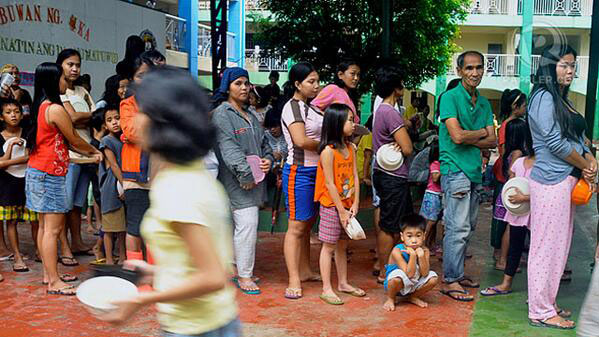SUMMARY
This is AI generated summarization, which may have errors. For context, always refer to the full article.

MANILA, Philippines (UPDATED) – Tropical Storm Maring and the southwest monsoon flooded 140 public schools and incurred damages to 58 others, affecting around 6 million students in Luzon, the education department said in a report acquired by Rappler on Saturday, August 24.
In its latest Rapid Disaster Assessment Report (RaDAR) issued 6 pm August 23, the Department of Education (DepEd) said 126 of 140 flooded schools are elementary schools, 73 of which are in Region 3 alone.
Bataan was hit hardest by flooding, with 59 elementary schools and 8 high schools submerged in water. In one school, 37 classrooms were heavily flooded.
The following areas had flooded schools as well:
- Ilocos Sur – 31 elementary schools
- Malolos, Bulacan – 14 elementary schools, 1 high school
- Rizal – 3 elementary schools, 3 high schools
- Laguna – 6 elementary schools
- Cavite – 5 elementary schools
- Caloocan – 3 elementary schools, 1 high school
- Mandaluyong – 1 elementary school
- Navotas – 3 elementary schools, 1 highschool
Cavite had the most number of schools that incurred damage—36 of the 58 overall number.
DepEd reported only one classroom in Olongapo City that was totally damaged by the combined effects of Maring and the southwest monsoon, but the cost of damage in the city’s schools was already estimated at P7.182 million — furniture damage included.
Pick schools last
Meanwhile, a total of 220 schools served as evacuation centers across Luzon, housing 19,641 families and 76,751 evacuees.
Rizal used 41 of its schools as evacuation centers—the most in one area, according to the report.
Noel Lansang, head of the newly-activated Quezon City Disaster Risk Reduction Management Office, however, told Rappler schools should be the last choice for evacuation centers.
“Before our first evacuation area is the school. But now it’s the least. When there are no other places we can bring the evacuees to, we bring them to the schools,” Lansang said in Filipino.
He said it was to avoid the interruption of the students’ education in schools. “And after evacuees use the school, you can’t immediately send students to class since the rooms are dirty [and in need of] cleaning and arrangement.”
According to RaDAR, only five Quezon City schools were used during the past week’s monsoon rains.
As of 6 am on Sunday, August 25, the Department of Social Welfare and Development said 87 schools are still open as evacuation centers, specifically in the following areas:
- Region 1 – 7 schools
- Region 3 – 6 schools
- Region IV-A, CALABARZON – 64 schools
- National Capital Region (NCR) – 10 schools
Make-up classes
A total of 8,456 schools and 6,769,883 students were affected by the “unprecedented” Habagat rains.
In fact, many schools from Region 1, 3, IV-A, IV-B, Cordillera Administrative Region (CAR) and NCR had week-long class suspensions.
But DepEd included 20 buffer days in its 200-day annual school calendar to prepare for long class suspensions like last week’s.
“There may still be enough buffer days at this time of the school year so as not to require make up classes following the days lost this week,” the department said in a statement Friday.
Class disruptions, it added, can be made up through additional take-home modules or actual make-up classes either on Saturdays or by extending class hours on weekdays.
“For public schools, Superintendents are mandated to decide on these in consultation with their school principals,” the statement read
In a year, schools have to fulfill a minimum of 180 contact days with students, or 45 days per quarter.
DepEd also relaunched on Friday its Balik Eskwela program to help the schools affected by the monsoon rains.
The department recommended in their website a list of materials needed in a Learner’s Kit. In addition to the kit, any donations may be dropped off directly to the affected schools or to their partner organizations. – Rappler.com
Add a comment
How does this make you feel?
There are no comments yet. Add your comment to start the conversation.